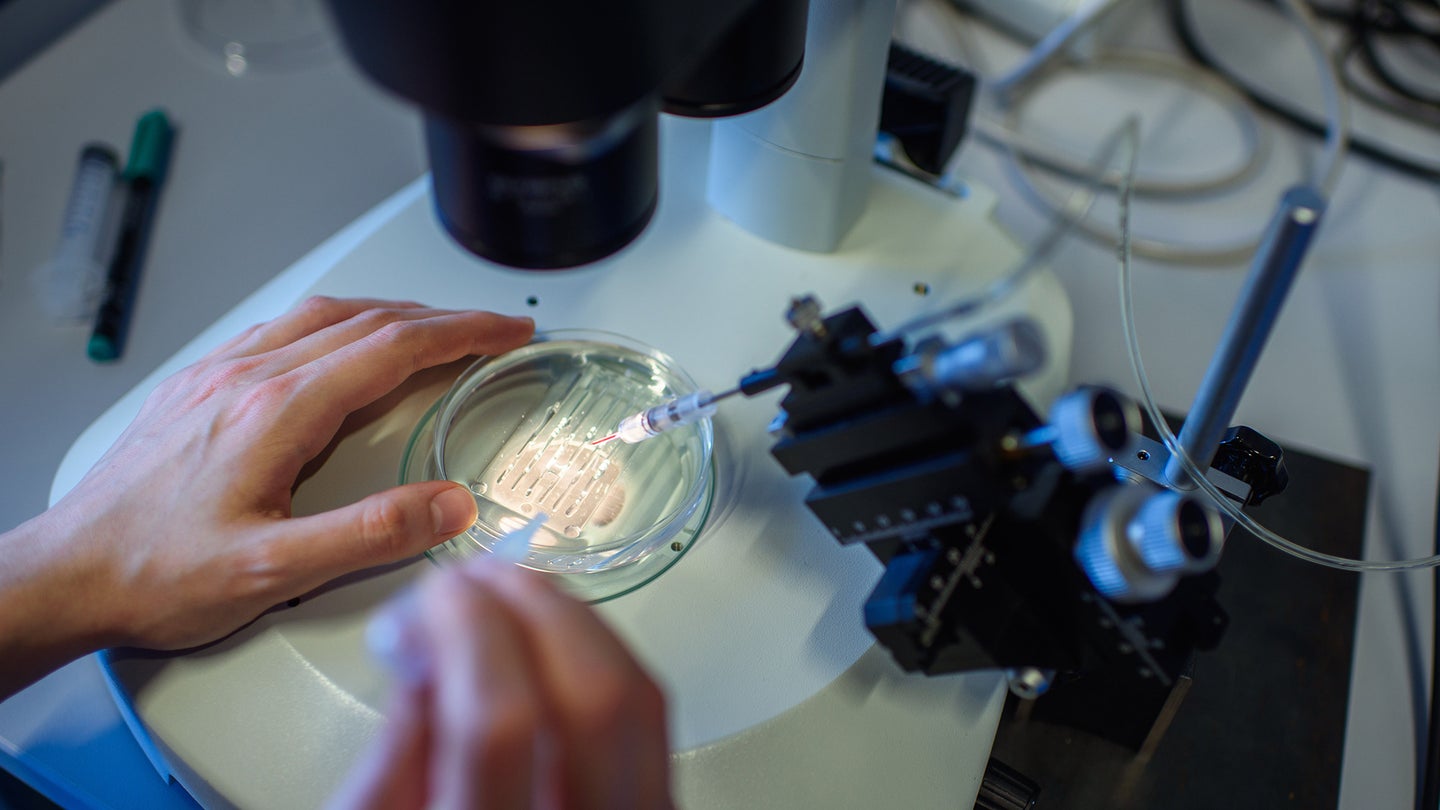The UK becomes the first country to approve CRISPR treatment
The new therapy uses gene editing to treat sickle cell disease and beta thalassemia.

Today, the United Kingdom became the first country to give regulatory approval to a medical procedure that uses CRISPR gene editing. The Medicines and Healthcare products Regulatory Agency (MHRA) approved Casgevy, a therapy that will be used to treat sickle cell disease and beta thalassemia (also called β -thalassaemia).
[Related: CRISPR breaks ground as a one-shot treatment for a rare disease.]
What are sickle cell disease and beta thalassemia?
Both diseases are painful, life-long genetic conditions that are caused by errors in the genes for a protein called hemoglobin. Red blood cells use hemoglobin to carry oxygen around the body. Sickle cell disease is particularly common among people with Caribbean or African ancestry. The abnormal hemoglobin makes the blood cells crescent-shaped and hard. The misshapen cells then clump together and block the flow of oxygen to the organs, which causes extreme pain. The cells can then die off early, which leads to anemia.
Beta thalassemia primarily affects patients with Mediterranean, south Asian, southeast Asian, and Middle Eastern backgrounds. It also causes anemia since the mody cannot make as much hemoglobin.
Casgevy was developed by Boston’s Vertex Pharmaceuticals and Switzerland’s Crispr Therapeutics and could be used to replace bone marrow transplants. The companies estimate that roughly 2,000 people in the UK are now eligible for the therapy.
“I am pleased to announce that we have authorized an innovative and first-of-its-kind gene-editing treatment called Casgevy, which in trials has been found to restore healthy hemoglobin production in the majority of participants with sickle-cell disease and transfusion-dependent beta thalassaemia, relieving the symptoms of disease,” interim executive director of healthcare quality and access at the MHRA Julian Beach said in a statement.
How does Casgey use CRISPR gene editing?
The new treatment uses the CRISPR-Cas9 gene editing technique, which enables scientists to make precise alterations to human DNA. French microbiologist, geneticist and biochemist Emmanuelle Charpentier and American biochemist Jennifer A. Doudna, who shared the 2020 Nobel Prize in Chemistry for their work.
Casgevy uses stem cells taken from a patient’s bone marrow. The cells are then brought into a lab and the genes that are meant to switch on a functioning version of hemoglobin are edited with CRISPR. According to the MHRA, patients must then go through a “conditioning treatment.” This can involve taking a drug that suppresses the immune system, radiotherapy, or chemotherapy to get the body ready for an infusion of CRISPR-modified cells back into the body. The new treatment does not come with the risk of graft versus host disease the way that a traditional bone marrow transplant does.
[Related: These organisms have a natural gene-editing system that could be more useful than CRISPR.]
After the infusion, patients may need to remain in a hospital facility for at least a month. During this time, the treated cells will begin to “take up residence” in the bone marrow and make red blood cells that have a stable form of hemoglobin.
While seeking regulatory approval, the researchers performed a clinical trial of 45 patients with sickle-cell disease. Of this group, 29 patients have been in the trial long enough for the researchers to gauge how effective Casgevy is. Of these eligible patients, 28 were free of severe pain crises for at least 12 months after treatment.
In the clinical trial of 54 patients with transfusion-dependent beta thalassemia, 42 patients have been in the trial long enough to determine efficacy. Of these, 39 did not require a red blood cell transfusion for at least 12 months after the treatment. The remaining three had more than a 70 percent reduction in the need for red cell transfusions.
“This is a great step in the advancement of medical approaches to tackle genetic diseases we never thought would be possible to cure,” University of Hertfordshire geneticist Alena Pance said a statement released by the Science Media Centre. “Modifying the stem cells from the bone marrow of the patient avoids the problems associated with immune compatibility, i.e. searching for donors that match the patient and following immunosuppression, and constituting a real cure of the disease rather than a treatment.”
The United States Food and Drug Administration is evaluating this same treatment. On October 31, an advisory committee to the FDA said that treatment was safe for patients. It is expected to make a decision by December 8.
A price for the therapy has not been announced, but it will likely be expensive.
Previously
Despite its potential for good, CRISPR has been tainted with controversy and ripe for debate over the fear of being able to pick and choose genes for so-called “designer babies.” In 2018, Chinese scientist He Jiankui announced that he had created the first gene-edited babies in the world. He was found guilty of conducting “illegal medical practices” and sentenced to 3 years in prison. This work furthered the debate of how to best regulate this powerful technique, with many saying that it shouldn’t be used to edit human genes that will be passed down to the next generation.
Other experiments and trials with using the gene editing technique on rare diseases have continued. In 2021, a clinical trial for a drug called NTLA-2001 began, researchers attempted to treat six people with a rare genetic disease called transthyretin amyloidosis with a technology that delivers CRISPR directly to cells in the liver. The FDA cleared the trial to enter its critical third phase in October.
